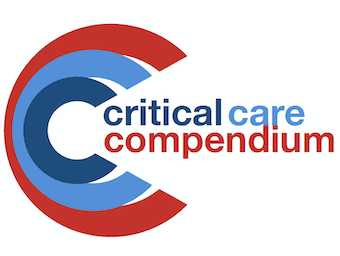
Lactate Clearance versus ScvO2 Monitoring in Severe Sepsis
Resuscitation targets in severe sepsis include: preload, e.g. CVP; afterload, e.g. MAP; tissue oxygen delivery; end point controversial: ScvO2 vs lactate clearance

Resuscitation targets in severe sepsis include: preload, e.g. CVP; afterload, e.g. MAP; tissue oxygen delivery; end point controversial: ScvO2 vs lactate clearance

Procalcitonin is the propeptide of calcitonin, a 116-peptide molecule with a molecular weight of 13 kDa. Procalcitonin has been studied as a sepsis biomarker, to help with diagnosing/ ruling out sepsis and to guide the initiation and cessation of antibiotics

Enteral Nutrition vs Parenteral Nutrition: controversial issue; at present best recommendations are to optimize oral/enteral nutrition, avoid forced starvation if at all possible, and judiciously use supplemental parenteral nutrition.

Folate Deficiency: 500-20,000 mcg stored in body; required 50-100mcg/day; required for DNA, RNA and protein synthesis (purine, thymidine and amino acid synthesis)

Routine management in ICU involves avoiding complications of hyperglycaemia (infections) and hypoglycaemia (arrhythmias, neurological damage, cardiac events). Traditional goals have varied

Immunonutrition involves feeding (enteral or TPN) enriched with various nutrients (arginine, glutamine, omega-3-fatty acids, nucleotides and anti-oxidants: copper, selenium, zinc, vitamins B, C and E) to improve immune responses and modulate inflammatory responses

Indirect calorimetry is a technique that measures inspired and expired gas flows, volumes and concentrations of O2 and CO2. The equipment used is also known as a metabolic cart

OVERVIEW CAUSES Patient Mechanical Drugs ASSESSMENT History Examination Investigations MANAGEMENT General approach Approach to gastric residual volumes >500mL q6h References and Links LITFL Journal articles

Nasogastric tube vs Percutaneous endoscopic gastrostomy (PEG) vs Jejunostomy

summaries of key studies from the intensive care nutrition literature

Nutritional Assessment in Critical Illness: poor nutritional state is a common feature of critically ill patients, either pre-existing or as a result of the illness

In the 1980s, the concept of parenteral hyperalimentation or hypercaloric feeding was dominant. This was stopped due to the sequelae, which limit attempts to rapidly correct malnutrition. Some early studies suggesting harm from early feeding were actually showing the effects of overfeeding